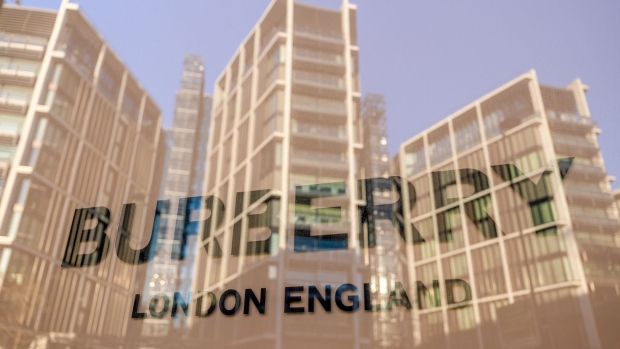Nov 17, 2022
Burberry Sales Rise, Buoyed by Demand From Tourists in Europe
, Bloomberg News

(Bloomberg) -- Burberry Group Plc’s new leadership plans a return to “Britishness” after a revamp by an Italian executive duo failed to keep the UK brand abreast of its luxury rivals.
The new team of Chief Executive Officer Jonathan Akeroyd and creative chief Daniel Lee wants to increase accessories to more than 50% of sales in the long term, banking on high-margin products in their overhaul of the trench-coat maker.
Comparable store sales rose by double digits in the three months through September as American tourists took advantage of the strong dollar to snap up luxury goods in Europe. Still, growth fell short of the high bar set by rivals such as LVMH SE and Hermes International.
Akeroyd, who took over in March, named Lee to succeed Riccardo Tisci as creative head in September. Lee’s arrival will enable Burberry to strengthen its accessory offerings, notably bags and shoes, the CEO said at a presentation Thursday in London. To build on its British roots, Burberry will also launch a rainwear campaign in January overseen by the designer, the first in four years.
Burberry shares rose about 1% in London trading, bringing the gain this year to 12%.
Burberry Modern British Plan, 1H Beat Affirm Growth Drive: React
Akeroyd succeeded previous CEO Marco Gobbetti, who was midway through an effort to take the Burberry brand further upmarket when he left to head Italian competitor Salvatore Ferragamo SpA.
Yorkshire-born Lee was previously head designer at Bottega Veneta, where he helped reinvigorate the Kering SA brand before leaving for undisclosed reasons a year ago. While there, Lee launched products such as the padded cassette handbag, which became a hit with shoppers, recognizable for its design rather than a logo.
Lee is due to present his first collection for Burberry during London Fashion Week in February.
Fresh Targets
Among a slew of goals announced Thursday, the UK firm said it’s now aiming to generate £4 billion ($4.7 billion) of sales in the medium term and hopes to add another £1 billion in the long term. To do so, it plans to roughly double sales of leather goods, shoes and women’s ready to wear, as well as grow outer wear by 50% in the medium term -- a period Akeroyd defined as three to five years.
Burberry will also seek to boost the share of e-commerce to 15% of retail sales over that time frame.
The new strategic plan comes as the outlook for the global economy darkens. UK inflation hit the highest level in more than four decades last month on soaring energy prices, figures Wednesday showed.
There are signs of faltering demand, especially for lower-priced luxury products in the US, the company said. Revenue in the Americas fell 3% in the quarter, following a 4% drop in the preceding three months.
“Burberry is one of the most exposed brands to aspirational consumers,” Luca Solca, analyst at Sanford C. Bernstein wrote by e-mail. “Aspirational consumers are far more exposed to energy and food price inflation, as they have a more limited discretionary spend capacity. Hence the weakness,” he added.
(Updates with comments from CEO starting in fourth paragraph)
©2022 Bloomberg L.P.






